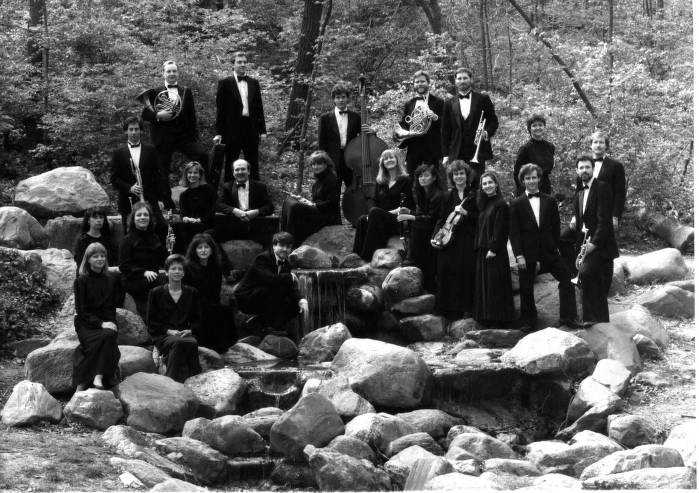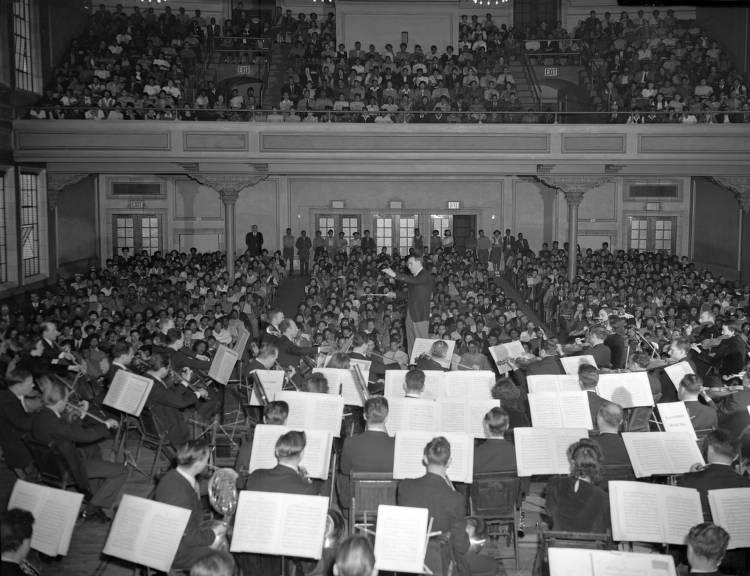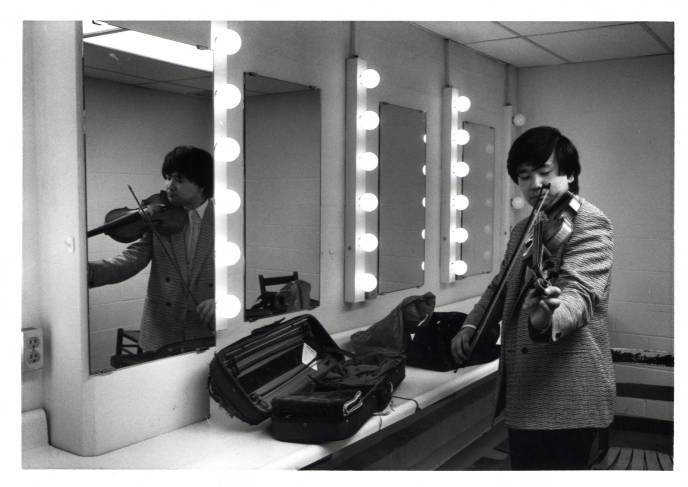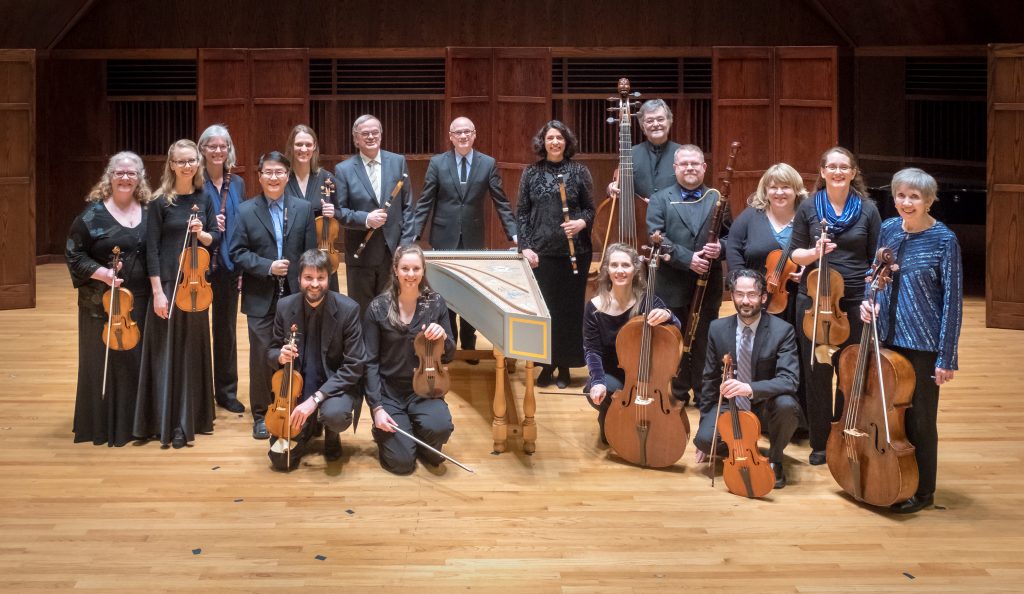Immigrants from central and eastern Europe brought their love of music to Indianapolis in the 19th century, and no nationality was more passionate about chamber music than the Germans, who had been raised on Bach, Beethoven, and Brahms. May festivals, sponsored by the German Club of Indianapolis, featured local chamber ensembles as well as recitalists and choral groups.

Early Ensembles and Performances, 1854-1900
The of Indianapolis, a German choral group founded in 1854 that remained active until early 2018, presented soloists and string quartets in its early years in addition to choral concerts. One of the founders of the Maennerchor was Adolph H. Schellschmidt. He and his wife, Emma Meissen Schellschmidt, immigrated to the U.S. in 1854, along with his parents and siblings. Schellschmidt was one of the first music teachers in Indianapolis. The couple had seven children, all born in Indianapolis. They each played multiple instruments, including the violin, cello, harp, and piano, and studied music in Europe. During the 1890s, the Schellschmidt family formed the Philharmonic String Quartet, one of the city’s earliest professional chamber ensembles.
Ensembles on Tour, 1900s-1940s
In the first half of the 20th century, under the auspices of the Maennerchor, violinists Joseph Szigeti and Georges Enesco, cellist Gregor Piatigorsky, as well as the Flonzaley String Quartet, a highly praised ensemble organized in New York City in 1902 and active until 1929, and the Budapest String Quartet, a group established in 1917 that escaped to the U.S. at the beginning of World War II with a contract to play rare musical instruments in Library of Congress collections, frequently visited the city.
Other organizations presented artists of international stature in chamber music. The Fine Arts Association, founded in 1899, arranged concerts at the . followed Talbot as a local impresario and through the concert series—the Marten Concerts—that she arranged presented some of the legendary names in music history, such as violinists Nathan Milstein, Fritz Kreisler, and Jascha Heifetz, in the 1930s and 1940s at the English Theatre on the Circle.
Local Societies, Ensembles, and Events, 1930s-

With the permanent establishment of the (ISO) in 1930, professional resident musicians of the symphony often formed smaller groups to explore masterworks of the chamber repertory, thus broadening the community’s musical fare.
Ensemble Music Society
The , founded in 1944 by Leonard Strauss, who worked with to establish the Indianapolis Symphony Orchestra and served as its first president, is one of the longest continuously running chamber music societies in America. It presents the outstanding ensembles of the world, including the Juilliard, Cleveland, Tokyo, Guameri, Miró, and Kronos string quartets. The society also promotes music education throughout Indianapolis with lectures and demonstrations.
Indianapolis Early Music
Filling yet another niche in the city musical life, (IEM) has the distinction of being the oldest continuous presenter of early music in the U.S. Originally known as the Festival Music Society, it was established in 1966. IEM presents concerts of music from the Medieval, Renaissance, Baroque, and Classical periods. The annual program, the Indianapolis Early Music Festival, held in Indianapolis during the month of July, usually consists of seven concerts and three lectures. IEM has had a long association with public radio. Selections from IEM performances are broadcast regularly throughout the U.S. and Canada on Performance Today. Indiana University NPR affiliate WFIU also features IEM performances on Harmonia.
Cathedral Arts and the International Violin Competition of Indianapolis
In 1969, Cathedral Arts was founded to support the but grew to sponsor events of national significance. By the 1970s few resident ensembles were performing on a regular basis, but ISO concertmaster Hidetaro Suzuki and his wife, pianist Zeyda Ruga Suzuki, revived that tradition in 1980 with the creation of “Suzuki and Friends,” which Cathedral Arts sponsored.
The success of “Suzuki and Friends,” in turn, spawned a number of new groups such as the Ronen Chamber Ensemble, the Cameo Trio, the Indianapolis Brass Choir, the Faulkner Chamber Players, and the talented musicians of the Scott family whose performances echo those of the Schellschmidt family a century ago.

In 1982, Cathedral Arts also initiated the quadrennial (IVCI). It is one of the most prestigious violin competitions in the world. IVCI has launched the careers of violinists between the ages of 16 and 29. Cathedral Arts increasingly focused on this competition and became known as the International Violin Competition of Indianapolis. Forty contestants compete hoping to be named IVCI laureates. Six laureates are designated for each competition. IVCI involves cash prizes that total more than $200,000. The top gold-medal winner performs in a Carnegie Hall recital, and plays with major orchestras in North America and Europe. IVCI also sponsors an annual concert series featuring past laureates and works with youth through educational activities.
Indianapolis Chamber Orchestra
Formed by conductor and musicologist David Urness (1935-1993) in 1984 as the Musicians of the Cloister at Trinity Episcopal Church, the (ICO) advances and promotes music composed for the small orchestra through professional concert performance and education programs. Urness, who had come to Indianapolis as coordinator of the performing arts for the , modeled the group after the renowned chamber orchestra at the Academy of St. Martin-in-the-fields in London.
Kirk Trevor, a cellist from Great Britain who also conducted the Knoxville (Tennessee) Orchestra and the Missouri Symphony, was music director and conductor for 27 years (1987-2015). Indiana native Matthew Kraemer became the third music director and conductor in 2015. Kraemer also serves as conductor of the Butler County Symphony (Pennsylvania) and the Marion (Indiana) Philharmonic. The ICO is the orchestra-in-residence at .
IndyBaroque Music
was founded in 1987 as the Ensemble Ouabache (pronounced Wabash). The group presents performances of Baroque music from the 17th and 18th centuries on period instruments in its annual series in Indianapolis, in guest concerts at other venues, and on CDs. IndyBaroque includes a larger ensemble, the Indianapolis Baroque Orchestra, established in 1995, and a smaller group, the Indy Baroque Chamber Players, formed in 2017, with internationally renowned Baroque flutist and conductor Barthold Kuijken as artistic director. Concerts take place at the Indiana History Center, and at the University of Indianapolis, where the Indianapolis Baroque Orchestra has been ensemble-in-residence since 1999.

Numerous other groups, featuring various string, wind, brass, and percussion combinations play in the widest ranges of repertory. These groups often commission new works, thus enriching the repertory and making the city a vital center for chamber music in America.

Help improve this entry
Contribute information, offer corrections, suggest images.
You can also recommend new entries related to this topic.

